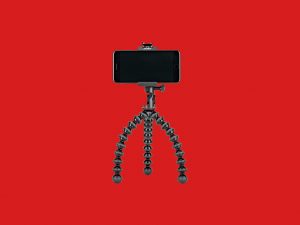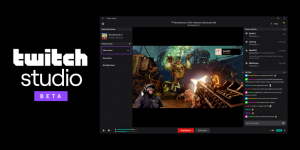I make this pledge to you: Within a few years, every robot vacuum will probably have a self-emptying bin. When iRobot first debuted the Roomba i7+, a self-emptying clean base was the best kind of revelation—both earth-shattering and bone-headedly obvious.
If your house gets messy enough to require daily vacuuming, it’s probably too dirty for a mere 0.6-liter dust bin. Nobody wants to chase after a robot vac to empty it mid-cycle or find out that it dragged dust balls all over your bedroom because it had a full bin. And it’s never fun when you open a tiny dust bin the wrong way and it explodes dust balls all over your pants.
I’ve vac’d with iRobot’s new Roomba S9+ for a week now, and I couldn’t wait any longer to say that the iRobot Roomba S9+ is as close to robo cleaning nirvana as I’ve experienced. In addition to the aforementioned self-emptying clean base, it also has best-in-class navigational technology and mapping software, and new edging capabilities that left every corner of my house sparkling clean.
Photograph: iRobot
I usually have to save a new robot vac at some point, but the S9+ never had to be rescued. Proprietary side and roller brushes rustled up my low-pile carpets, leaving clean, raised ridges in their wake. Like most iRobot vacuums, this exceptional service does come with a staggeringly high price tag.
Mine Craft
It’s hard to look at the Roomba S9+ (or, as my son randomly named it, Baby Rocky) and not think that its new, D-shaped design looks an awful lot like the Neato line of Wi-Fi-enabled robot vacuums. Nevertheless, it is still a very good-looking bot that’s 3.5 inches high and about 12 inches wide—with a glowing light that rotates under the decorative bronze circle when it’s running.
IRobot’s vSLAM (visual simultaneous location and mapping) navigational technology was developed from research used to help robots find landmines. Every year, it gets a little bit better.
This year, iRobot added a 3D sensor to Baby Rocky’s slew of drop sensors and cliff sensors (there’s also top-mounted optical sensor!) to quickly concoct a complete map of your home. The 3D sensor scans the path in front of it 25 times a second, adding up to a total of 230,400 data points per second—each one of which keeps the S9+ from getting snarled in piles of clutter.
Another new navigational feature this year is PerfectEdge technology, which lets Baby Rocky hew closely to complicated edges. My Ikea-renovated kitchen cabinets have an annoying slim edge that sticks out about 3 inches from every corner. These edges often trap pieces of cut onion or dog hair in their way.
Baby Rocky carefully traced the cabinet’s edges to tease out the debris, leaving my kitchen cleaner than it’s been in a long time. iRobot has also redesigned the corner brush. Rather than arranging the bristles so they stick straight out, the corner brush sets the bristles at a 26-degree angle, like long, coaxing fingers.
It also has iRobot’s proprietary rubber carpet roller brush that was one of my favorite features on the Roomba 980 as well as the Roomba i7+.
To start running Baby Rocky, I plugged it in and added a new robot via the iRobot app. The first cleaning run took an hour and 21 minutes to clean 330 square feet of my house, with an amazingly detailed map showing me the location of the “dirt events” (i.e. under my kid’s chairs, by the shoe rack, and my entire living room rug).
Photograph: iRoboto
It took two cleaning runs and a training run for Baby Rocky to develop a complete smart map of my house—after a mere two runs, the map was 90 percent complete. Over time, the area in square feet remained remarkably consistent, but both the run time and the number of dirt events went down as Baby Rocky became more and more familiar with my house.
After the smart map was completed, I was able to use the app to painstakingly place virtual dividers demarcating the bedrooms, hallway, bathroom, kitchen, and living room, and set up Keep Out zones to keep the robo vac out of our messy closets. I enabled Alexa through the iRobot app and so was able to put two children down for a nap in two separate rooms, start a batch of chili, and send Baby Rocky to clean the kitchen and living room without waking up the kids.
Baby Rocky also has an impressive two-hour battery life and a new smart charging feature, which means that when power gets low, the autonomous little vacuum will gauge how much power it needs to finish out the cycle and only charge for that long. That came in handy, since it usually needed to empty its bin twice per one-hour cycle in my house. I never worried that the long trek back to the clean base would use up all the battery, or delay the cleaning cycle unnecessarily.
And finally, as with most smart botvacs, you can also use the app to schedule cleanings, switch from a detailed to a quiet clean, or link up iRobot’s robot mop to take a pass through the kitchen when the vacuum’s cleaning cycle is done.
Hunt and Gather
A robot vacuum can be measured not just in terms not just of what it does but what it doesn’t do. Over the course of several years testing robot vacuums, I have gotten used to taking care of cheaper robot vacs in certain ways. Before I test them, I usually have to check under the couch for stray toddler socks or put down unsightly magnetic boundary strips to keep them away from my treacherous kitchen step.
I did my best to clear the way for Baby Rocky, too. But over a week, I slowly realized that it didn’t matter. This Roomba didn’t get stuck. For example, shoelaces dangling off my shoe rack are a guaranteed botvac booby trap. But when I checked the area under the shoe rack, I discovered that, in an Indiana Jones–level maneuver, Baby Rocky had evaded the dangling laces while cleaning up dried mud and debris.
If I were a dust ball, I would flee in terror. Last week, I read a book on the couch and watched the S9+ methodically destroy and suck up a wooden clothespin that it had found under the couch. I never had to rescue it from a kitchen step, dig a piece of floss out of its guts, or walk around with my phone listening for a lost robot vacuum to give me a whimpering ping.
Unlike the Shark IQ vac, iRobot uses proprietary AllergenLock dust bags to capture all the stray dog hairs and dirt in the clean base. IRobot states that each bag contains up to 30 full dust bins, which means that in my house, you’d have to replace the bag every two weeks. But replacing those bags isn’t cheap. New bags cost $20 for a three-pack.
On the other hand, $20 every other month is probably a drop in the bucket for someone who wants to spend $1,400 on consistent, flawless vacuum performance. I do feel obligated to point out that last year’s Roomba i7+ is significantly cheaper right now.
In a few years, a robot vacuum without a self-emptying base will hopefully be nothing but a sad and dusty memory. For now, it’s still a luxury.



